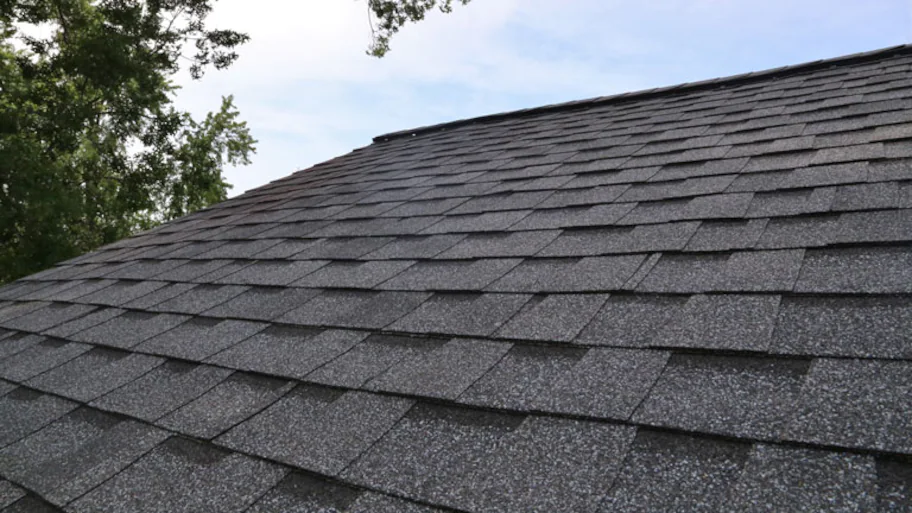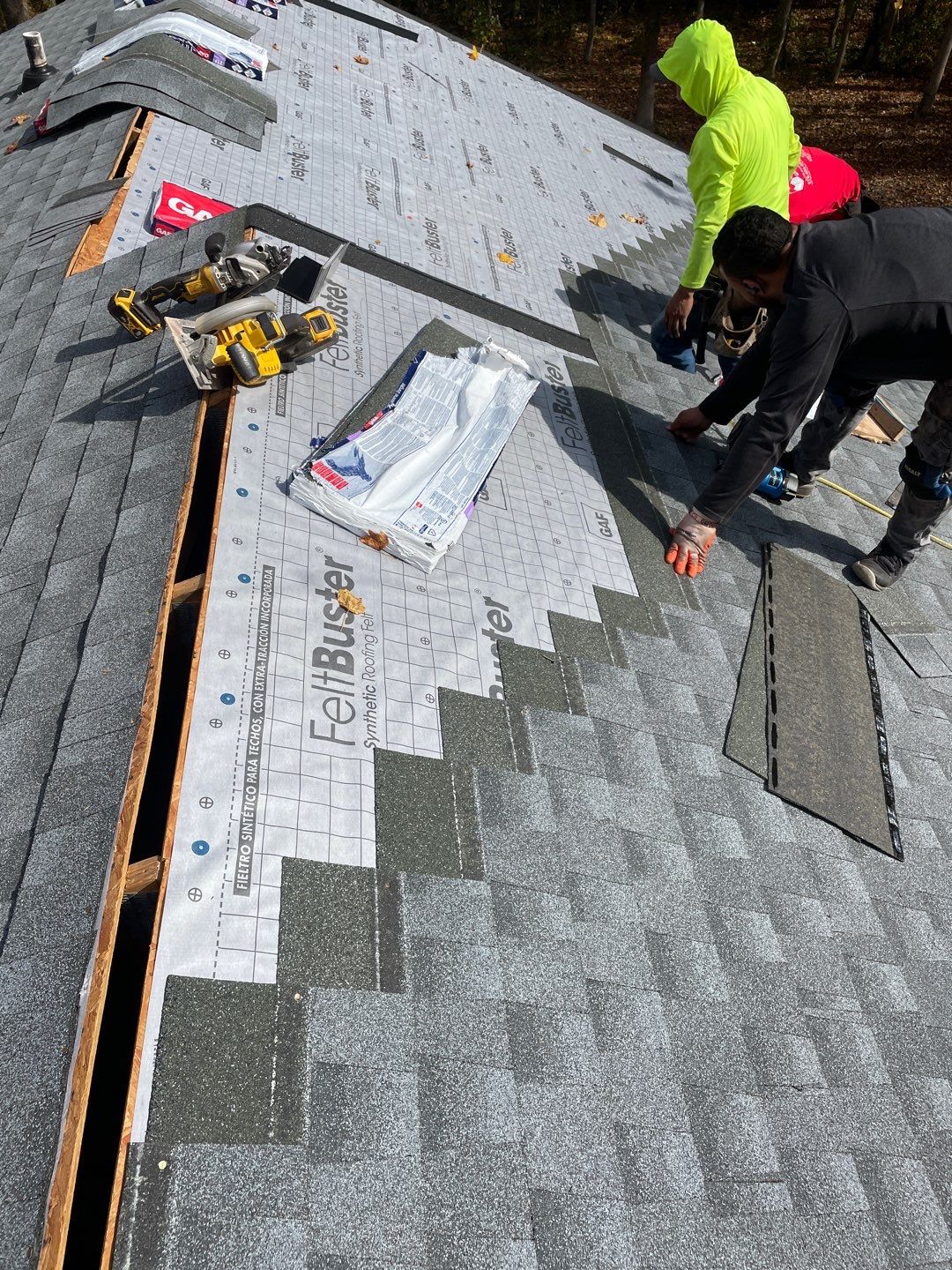Finest Practices for Ensuring Proper Roof Ventilation
A balanced consumption and exhaust vent ratio, commonly 1:300, plays a crucial function, with consumption vents ideally positioned at the reduced side of the roof covering for great air entry and exhaust vents at the optimal for warm air exit. Keeping insulation away from vents is essential to protect against airflow limitation.
Understand Ventilation Fundamentals
Appropriately recognizing air flow fundamentals is vital for guaranteeing the long life and performance of roof. Efficient ventilation mitigates dampness accumulation and temperature level extremes in the attic, both of which can cause significant architectural damage over time. A well-ventilated roofing helps in protecting against typical concerns such as mold and mildew development, wood rot, and ice dams, which can endanger the stability of the roof products and the underlying structures.
The primary objective of air flow is to help with the movement of air, permitting a constant exchange in between the interior and outside atmospheres. This balance is achieved via a mix of intake and exhaust vents that work with each other to keep optimal air flow. Intake vents, normally located along the eaves or soffits, permit fresh air to go into the attic area, while exhaust vents, commonly positioned at or near the roof covering ridge, allow warm, moist air to escape.
Trick factors affecting the efficiency of roofing air flow consist of correct placement, sufficient sizing, and guaranteeing that both intake and exhaust vents are unblocked. Regular examination and maintenance are crucial to determine potential blockages, damage, or inadequacies in the air flow system, consequently securing the roofing's performance and sturdiness.
Sorts Of Roof Vents
Roof vents play a critical role in keeping effective attic room ventilation and, by expansion, the total wellness of the roofing system. Various kinds of roof covering vents are available, each with unique advantages tailored to particular roofing demands.

Soffit vents are mounted under the eaves and job in tandem with roof covering vents to make certain a balanced consumption and exhaust system. By allowing cooler air to get in from below, soffit vents facilitate the expulsion of hot air through upper vents. Gable vents, situated on the outside walls of the attic, offer an additional reliable service, particularly in homes with saddleback roofs.
Assess Your Present Air Flow

Next, consider the age and problem of your roofing products and ventilation parts. Older systems may not follow present building regulations or might have deteriorated in time, lowering their performance. Conduct a thorough assessment to identify any kind of signs of damage, such as corrosion, damage, or voids that might compromise the system's efficiency.
Furthermore, determine the attic room temperature level and moisture levels. High temperature levels and humidity can indicate inadequate air flow.
Installation Best Practices
Reliable installment of roofing air flow systems is paramount for guaranteeing optimal performance and long life. Proper setup starts with understanding the certain ventilation requirements of the roof covering and the building it covers. This involves determining the appropriate proportion of consumption to exhaust vents, usually sticking to the 1:300 guideline, which states one square foot of ventilation for every single 300 square feet of attic room floor room.

Intake vents ought to be set up at the roof covering's reduced side, typically in the you can try this out soffits, to allow awesome air to go into. Exhaust vents, on the various other hand, ought to be installed near or at the roofing system's height to promote the departure of warm, moist air.
Seal all vent connections diligently to prevent air leakages and prospective water infiltration. Usage high-grade materials and follow producer guidelines to guarantee resilience and efficiency. In addition, incorporating ridge vents with baffles can substantially enhance airflow efficiency by preventing wind-driven rain and snow from getting in the attic.
Inevitably, exact installment of roofing ventilation systems reduces possible problems such as mold growth, ice dams, and architectural damage, making certain the roof's honesty my review here and the structure's total health and wellness.
Regular Upkeep Tips
Uniformity in maintenance techniques is fundamental to making sure the lasting effectiveness of roof covering air flow systems. Throughout these inspections, make sure that vents are totally free of particles, nests, and various other obstructions that could hinder air flow.
Use a soft brush or a vacuum to remove dirt and debris from intake and exhaust vents. Be cautious not to harm the vent screens or louvers throughout the process.
Proper insulation is just as important. Guarantee that attic insulation does not obstruct the vents, as this can badly restrict airflow. Reposition or change it to preserve an efficient barrier. if any insulation has moved or worked out.
Finally, replace any kind of harmed or missing out on components immediately. Damaged vents, cracked shingles, or shabby flashing can all add to poor air flow and must be addressed immediately. Regular maintenance ensures that the roof ventilation system operates efficiently, thereby extending the life-span of the roofing system itself.
Conclusion
Making certain proper roofing ventilation is critical for maintaining the performance and resilience of a roof covering system. Adherence to the 1:300 intake and exhaust vent ratio, combined with the tactical positioning of vents, discover here is important.
A balanced consumption and exhaust vent ratio, generally 1:300, plays a critical role, with consumption vents preferably placed at the reduced edge of the roofing for great air access and exhaust vents at the optimal for warm air exit. Consumption vents, normally located along the eaves or soffits, allow fresh air to get in the attic room space, while exhaust vents, often situated at or near the roofing system ridge, make it possible for warm, damp air to leave.
Soffit vents are set up under the eaves and job in tandem with roofing vents to make sure a well balanced consumption and exhaust system. By permitting cooler air to enter from below, soffit vents facilitate the expulsion of hot air with top vents. Adherence to the 1:300 consumption and exhaust air vent proportion, coupled with the calculated placement of vents, is essential.